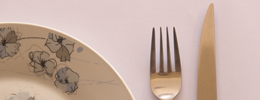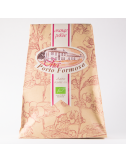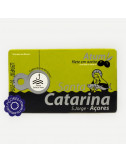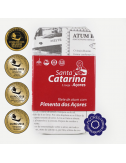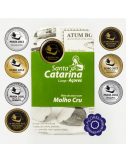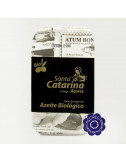TEA IN THE AZORES
In the 16th century, tea was introduced to Portuguese priests and merchants in China who later introduced it to Europe. The Portuguese called it Chá because the Chinese character for “tea” can be read as Te (which comes from the Malay word for “drink”) or as something as Cha (coming from the Mandarin word for “harvest”).
Tea production is thought to have been introduced in the Azores in the beginning of the 19th century — around 1820 — by Jacinto Leite, an Azorean born in the island of São Miguel. At the time, Jacinto was working as commander of the Royal Guard of King John VI in Brazil and decided to create the first tea plantation São Miguel, using seeds he had brought from Rio de Janeiro.
The climate of the island proved to be good for the crops and the cultivation of tea slowly gained support in the island. While the production and exportation of orange — a very important part of the island’s economy — was in clear decline, tea production looked like a promising substitute. This made the members of the Micaelense Promoter Society look at the production of tea as the economic cycle that would replace the fading one.
Therefore, tea production became an important occupation for the people of the island and its economy, reaching its peak in the 1950’s when exportations achieved the staggering amount of 250 tons, as a result of 300 ha of cultivation. For a small island in the middle of the ocean, those were very impressive numbers and the tea future never looked so bright.
However, with the aftermath of World War I and the Customs Protection of Mozambique Tea, the production and exportation of tea in the Azores began facing increased difficulties. This situation triggered such a crisis in the tea production that by 1966, out of 14 processing tea factories only 5 remained working. Currently, there are only two: the Gorreana Tea Factory and the Porto Formoso Tea Factory.
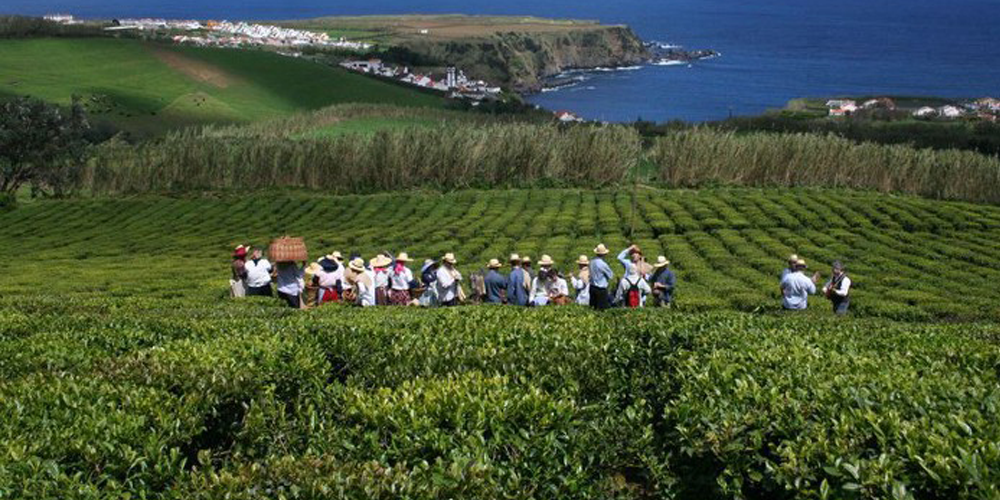
Camellia Sinensis
WHAT IS TEA?
Tea is an aromatic beverage commonly prepared by pouring hot or boiling water over cured leaves of the Camellia sinensis, an evergreen shrub native to Asia, of the Camellia genus — which in Chinese literally means “tea tree” — and belonging to the Theaceae family. Tea plants are propagated from seed and cuttings. It takes about 4 to 12 years for a plant to bear seed and about three years before a new plant is ready for harvesting.
All tea comes from the Camellia sinensis plant and its varieties. Worldwide, there are about 3,000 varieties of tea, all with differences in flavor and characteristics. The differences between types of tea reside in the selection and treatment of the leaves before being prepared.
There are two “types” of tea produced in the Azores — Black Tea (with its Orange Pekoe, Pekoe and Broken Leaf varieties) and Green Tea.
Black Tea
This is a tea that is heavily oxidized and generally stronger in flavor than other teas. Many of the active substances in black tea do not develop at temperatures lower than 90 °C. As a result, in the West, black tea is usually steeped in water near its boiling point (around 99º).
For Black Tea, leaves are subjected to withering and successive windings, causing partial crushing of the plant’s tissues. Thereafter they are exposed to air and undergo a slow natural process of oxidation, fermentation and drying.
During the harvest of the tea, the plant shoots are picked when most of them have three leaves. This is because each shoot is of a different age and, as such, different chemical compositions. Each leaf will give a different tea with distinct flavors and aromas.
In the tea industry, the quality of the tea is graded based on the quality and condition of the tea leaves themselves. The highest grades are referred to as “Orange Pekoe” and the lowest as “fannings” or “dust”. The leaves of the tea plant have different sizes, and the smaller leaves are more valuable than the bigger ones.
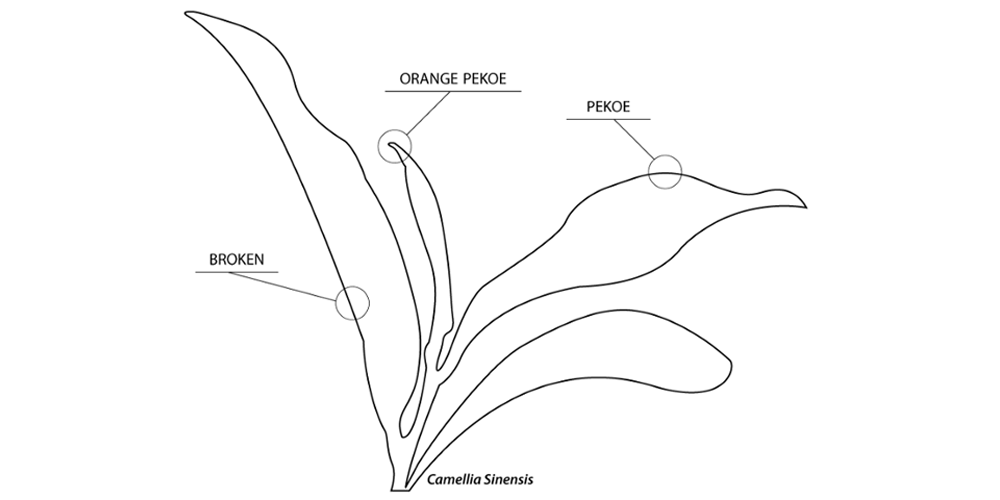
Both Gorreana and Porto Formoso factories produce “Orange Pekoe” teas, and their selection are of the highest quality. Manually produced to ensure the best leaf treatment possible, with a harvesting experience of centuries, these are surely some of the best teas in the world. The main production of tea in both factories is Black Tea (Orange Pekoe, Pekoe and Broken Leaf) but they also produce Green Tea and some special seasonal mixes you can try.
There are three types of Black tea produced in Gorreana and Porto Formoso factories:
Black Tea “Orange Pekoe” — The highest quality tea available. Extremely aromatic and light. Made up from the first leaf and terminal bud of the tea plant.
Black Tea “Pekoe” — This tea is made up of the second leaf of the tea plant. It has a less pronounced taste and aroma than “Orange Pekoe” but more intense in flavor.
Black Tea “Broken Leaf” — from the third leaf of the tea plant comes “Broken Leaf”, lighter in aroma and taste. This tea has a smooth, light taste and subtle aroma with very little in tannin.
Green Tea
This is a type of tea that has not undergone the same withering and oxidation process used to make black tea. After plucking, the delicate leaves are sorted and cleaned and are either steamed or fried depending on the green tea, then undergo the drying phase on trays.
In regions of the world that prefer mild beverages, green tea is steeped in water around 80 to 85ºC. For the production of green tea, the leaves are sterilized with steam, rolled and then dried. This originates a tea that is rich in tannin, with an intense flavor and green color.
TEA AND HEALTH
Tea contains biochemical compounds called polyphenols, including flavonoids. The latter are also found in fruit and vegetables and are antioxidants, which prevents the degeneration of cells responsible for more than fifty diseases.
Recent studies have shown that the regular consumption of tea inhibits the clumping of blood platelets, avoiding dangerous clots that cause the majority of heart attacks and strokes. Other studies suggest that the tea in an inhibitor of some types of cancer, including respiratory and digestive tracts and the skin.
Tea is rich in vitamins and minerals. But its benefits don’t stop here. It has antioxidant power due to its high content of flavonoids, which contributes to the reduction of the aging of the cells. It helps with the digestion and the reduction of the cholesterol in the blood, hydrates, reduces the fatigue, increases the alertness and improves the concentration.
TIPS & SUGGESTIONS
Choose Wisely
Black tea is recommended to be drunk in the morning, because it is stronger and more energetic. The aromatic tea is a lighter tea that can be enjoyed in the afternoon. Green tea is best suited to be drunk at the end of the day, or after those heavier meals, as a digestive drink.
Not as Hot as Hell
As soon as the water starts boiling, remove it from the heat. Overheating the water causes the tea to taste flat. Immediately pour the water into the pot, cover, and let stand. If using green tea, allow the water to cool slightly (±80ºC) before pouring onto the leaves.
As You Like
If you are going to add lemon and sugar to your tea, please add the sugar first, since the citric acid from the lemon will prevent the sugar from dissolving.
Milk is often used in full-bodied black teas such as Broken Leaf Tea. Don’t use cream as it interferes with the taste of the tea. Do not use milk with green tea.
Adding honey to tea instead of sugar is a healthier way of sweetening your tea.
Protect your Goods
Tea must be sealed properly, in order to be truly enjoyed. Teas are easily affected by other scents, which could alter the quality of a good tea. People often notice that their teas have picked up other scents from surrounding foods and spices.
Further Studies
A food safety management group of the International Organization for Standardization (ISO) has published a standard for preparing a cup of tea (ISO 3103: Tea — Preparation of liquor for use in sensory tests), primarily intended for standardizing preparation for comparison and rating purposes.
